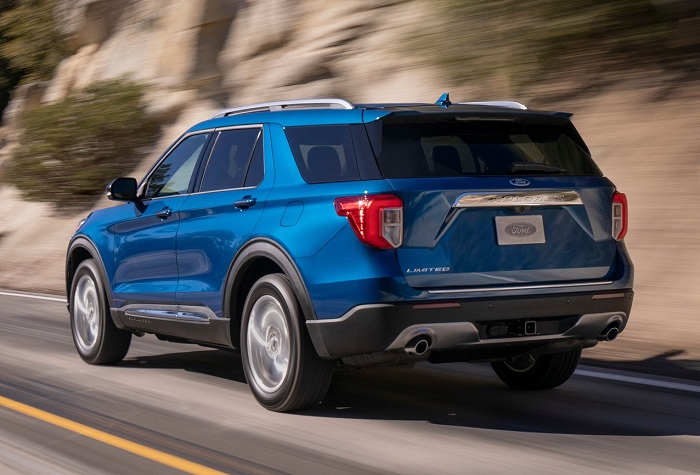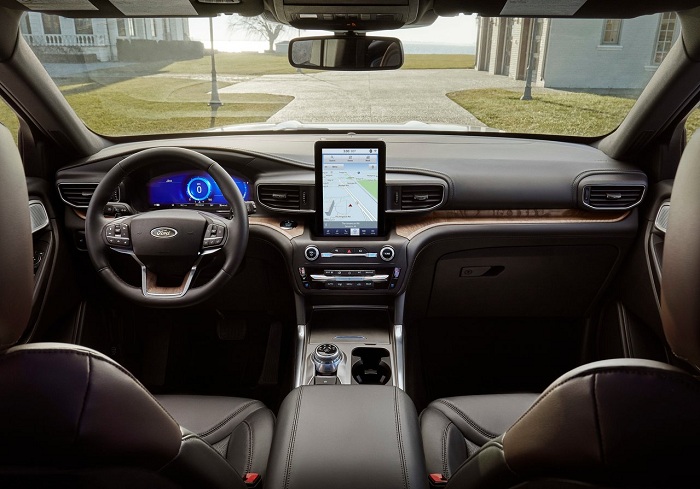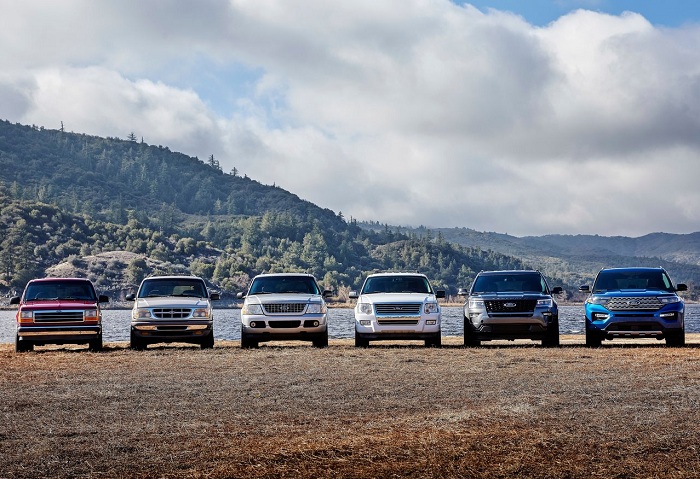Now entering its sixth generation and based on Ford’s new CD6 platform shared with the Lincoln Aviator that bowed in Los Angeles last year, the Explorer still boasts a unibody layout that debuted with the fifth generation in 2010, but which is now some 51kg lighter thanks to more extensive use of aluminium, meaning that the newcomer comes in at 1 970kg in its lightest form.
Again providing seating for seven but with a more rounded design “to make it the best Explorer ever”, the newcomer also comes in longer and wider than the previous D4 underpinned model, with Ford claiming an overall boot space of 2 486-litres with the second and third rows down.

Speaking of the interior, the Explorer does away with the integrated infotainment system for a tablet-like 10.1-inch display with Apple CarPlay, Android Auto and SYNC, while a new 12.3-inch all digital instrument cluster replaces the previous analogue setup.
Heading for the US in four trim levels, preliminary spec for the unbadged base model includes a smaller eight-inch infotainment system, dual-zone climate control and 4G LTE Wi-Fi, while the XLT comes with a 6.5-inch colour instrument cluster display, 10-way electrically adjustable driver’s chair and a second row USB port.
The premium Limited meanwhile comes with a 14-speaker, 980-watt B&O sound system, electrically folding third-row, smartphone charger, heated leather steering wheel, 10-way adjustable passenger’s seat and sun-blinds for the second row. At the sharp end, the Platinum features Active Park Assist, a dual-pane sunroof, remotely opening electric windows, 21-inch alloy wheels, Reverse Brake Assist and satin chrome as well as aluminium exterior detailing.

Depending on the model, the Explorer’s range of safety and driver assistance systems includes Blind Spot Information with Cross-Traffic Alert, Automatic Emergency Braking with Pedestrian Detection, Lane Keeping Assist, Forward Collision Warning and Dynamic Brake Support, Auto High Beam Assist, Evasive Steering Assist, Post Impact Braking System and Intelligent Adaptive Cruise Control with Speed Sign Recognition.
Up front, Ford has dropped the number of engine options to two with the base, XLT and Limited coming powered by a 2.3 EcoBoost that produces 221kW/420Nm, while the Platinum utilises the new 3.0 EcoBoost V6 that debuted in Aviator, and which makes 272kW/515Nm. A more potent ST is reportedly expected to debut later adding an additional turbocharger to the latter motor for a rumoured output of 298kW/543Nm, while a hybrid will also arrive in due course.

On all models, the widely used 10-speed automatic gearbox co-developed with General Motors comes standard, though with power now being routed to the rear wheels as opposed to the fronts of the D4 Explorer. All-wheel drive remains optional however and now includes Ford’s Terrain Management System with seven modes; Eco, Normal, Sport, Tow/Haul, Slippery, Trail and Sand. Tow rating is a claimed 2 404kg or 2 540kg for the V6.
Production of the Explorer will once take place at Ford’s Plant in Chicago with a speculated starting price of around $32 000 (R442 588), but as before, don’t expect it to be offered in South Africa as will only be made in left-hand drive.
















